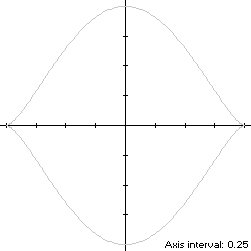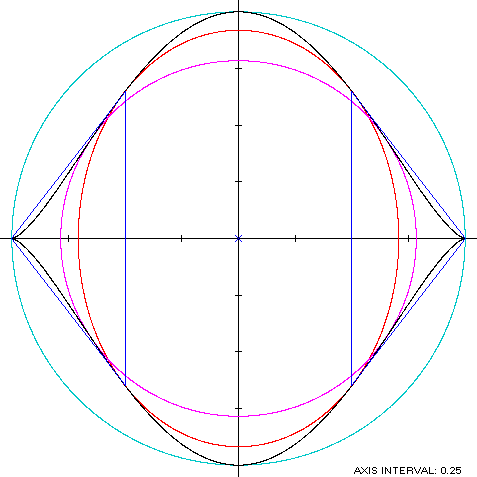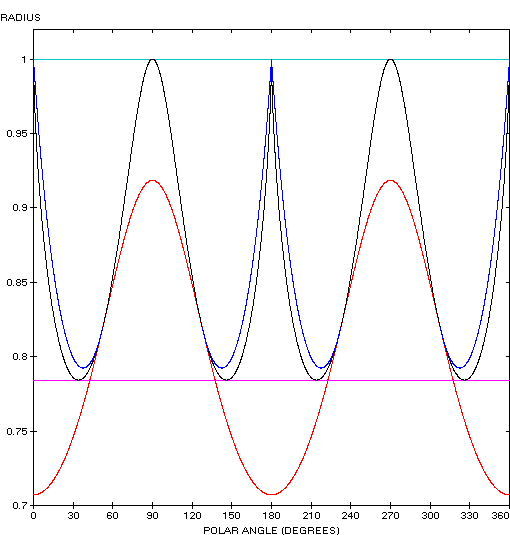Balmoral Software

Balmoral Software

x(t) = cos(t)The curve is traced out in a counterclockwise direction, starting from its right-hand cusp at (1,0). Its abscissa extrema are (±1,0) and its ordinate extrema (0,±1), so its bounding rectangle is a 2 x 2 square.y(t) = sin3(t), 0 ≤ t < 2π
x'(t) = -sin(t)so by (L1), the perimeter of S isy'(t) = 3sin2(t)cos(t),
By (A1), the area enclosed by S is
x''(t) = -cos(t)so by (X1), the curvature of S changes sign wheny''(t) = 6sin(t) - 9sin3(t),
-sin(t)[6sin(t) - 9sin3(t)] = -cos(t)[3sin2(t)cos(t)]Equation (X2) is evaluated with respect to the point
which has a solution in the first quadrant at
 and (1,0) with a straight line
segment of length
and (1,0) with a straight line
segment of length  and
symmetrically in the other three quadrants. By
(L1), the perimeter of the convex hull is:
and
symmetrically in the other three quadrants. By
(L1), the perimeter of the convex hull is:
which is about 0.4% shorter than the perimeter of S.
In the left figure below, the area of the Quadrant I portion of the triangle outlined in blue is
and the area of the remaining convex hull area in Quadrant I is
so the total area of the convex hull is
which is about 2% larger than the area of S.
 to 1, so the
inradius is
to 1, so the
inradius is
and the circumradius is 1. Since the maximum distance of S from the origin along its positive and negative axes is the same, its circumellipse is the same as its circumcircle.
x(t)y(t) = cos(t)sin3(t)is maximized in the first quadrant when t* = π/3, so the inellipse dimensions are
For verification, we have
Figure Parameters Perimeter Area Centroid Incircle R = 4.927795 1.932393 Inellipse 5.128805 2.040524 Mouth curve Width: 2
Height: 25.82896 2.356195 Convex hull 5.805229 2.409196 Circumcircle R = 1 6.283185 3.141593
 |  |
| The Aria |
The mouth curve (red) is a member of a group of similarly-shaped figures described on these pages, including (inside to outside) the Vesica Piscis and the cycloid:
Copyright © 2021 Balmoral Software (http://www.balmoralsoftware.com). All rights reserved.